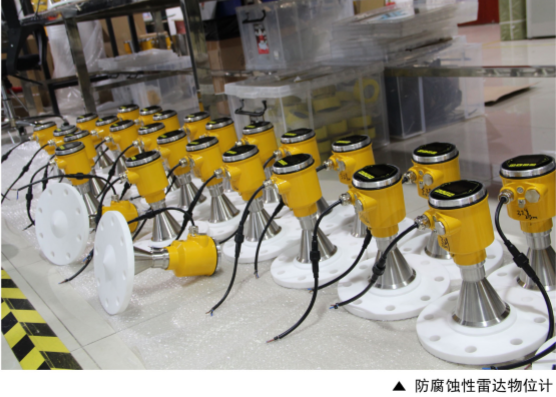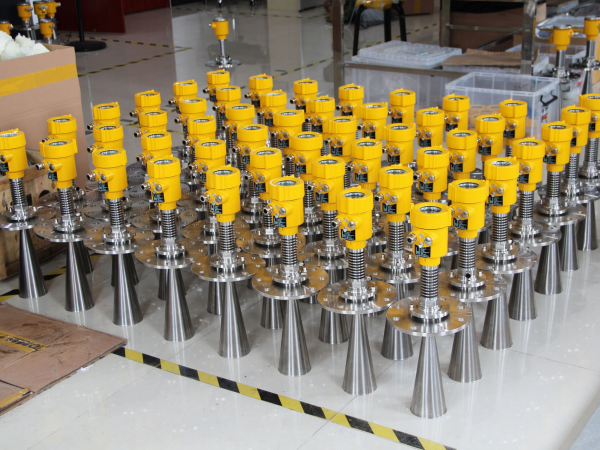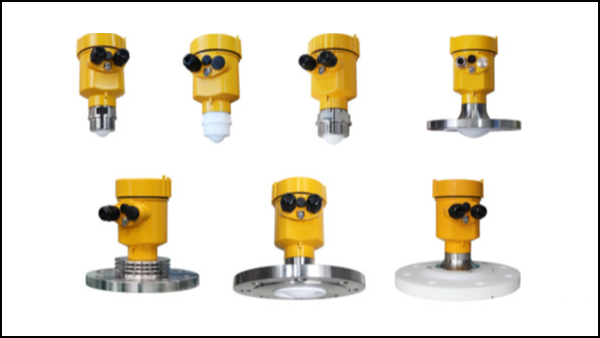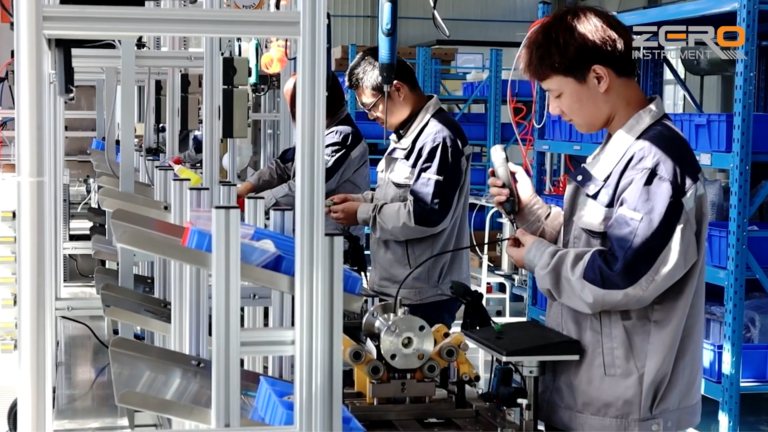In industrial environments where precise level measurements are crucial, radar level meters are widely used due to their accuracy and reliability. However, the installation of these devices can be challenging, especially when mounted on uneven surfaces or in confined spaces. This is where the universal (or swivel) flange plays a critical role, offering flexibility and stability during the installation process. In this article, we will explore the details of universal flanges, their advantages, and practical considerations for usage.
1. What is a Universal (Swivel) Flange?
A universal flange, often called a swivel flange, is a specialized mounting accessory that allows radar level meters to be installed at various angles. Unlike fixed flanges, which require precise alignment during installation, the universal flange can be rotated and tilted to align the device perfectly, regardless of the tank or pipe’s orientation.
The primary feature of this flange is its multi-directional adjustment capability, making it ideal for applications where the mounting surface is not perfectly aligned with the measuring direction.

2. Key Components and Structure
A typical universal flange includes the following parts:
- Flange Plate: Usually made from stainless steel (such as 304 or 316L), ensuring high corrosion resistance.
- Swivel Joint: The core of the flange, allowing movement along multiple axes for precise angle adjustments.
- Locking Bolts: These bolts are used to fix the flange once the correct alignment has been achieved, ensuring stability.
- Sealing Ring: Ensures a tight seal to prevent leakage of gases or liquids during operation.
3. Benefits of Using a Universal Flange
Flexible Installation:
- The universal flange can be adjusted along different axes, making it easy to install radar level meters even in irregular or tight spaces.
- It eliminates the need for perfect alignment between the tank opening and the sensor’s measurement direction.
Improved Measurement Accuracy:
- By aligning the radar level meter to the optimal angle, the flange minimizes reflection errors, ensuring reliable and precise measurements.
- This is particularly important in vessels with sloped bottoms or internal obstacles that can interfere with radar signals.
Reduced Installation Time and Costs:
- The flexibility of the universal flange reduces installation errors, avoiding costly corrections or the need to modify the tank openings.
- It is easy to install and adjust, streamlining the commissioning process.
Enhanced Stability and Durability:
- Once the desired angle is set, the flange can be locked securely, maintaining stability even in environments with vibration or pressure changes.

4. Applications in Different Industries
The universal flange is used in a variety of industries where radar level meters are essential.
Chemical and Petrochemical Industry:
- Storage tanks for hazardous chemicals often have angled or non-standard openings. A universal flange ensures proper alignment, improving measurement accuracy.
Food and Beverage Industry:
- Clean-in-place (CIP) systems often require sensors to be removed and re-installed frequently. The easy adjustability of the swivel flange makes maintenance simpler.
Water Treatment Plants:
- Radar level meters in water reservoirs and confined sumps benefit from the flexibility of the flange, especially when access is limited.
Pharmaceutical Industry:
- In hygienic environments where equipment alignment needs to meet strict standards, the swivel flange allows quick and precise sensor positioning.

5. Installation Guidelines and Best Practices
Ensure Proper Sealing:
- Use appropriate sealing rings and gaskets to prevent leaks, especially in pressurized tanks.
Adjust the Angle Carefully:
- Make small adjustments to the radar sensor’s angle during installation to find the optimal alignment for the measuring environment.
Tighten Locking Bolts:
- Once the correct position is achieved, ensure that all bolts are securely tightened to prevent any movement caused by vibration or pressure fluctuations.
Regular Inspection:
- Periodically check the flange and bolts to ensure they remain tight and that there is no misalignment or wear.

6. Conclusion
The universal (swivel) flange is a highly practical solution for installing radar level meters in industrial environments. Its ability to adjust to multiple angles ensures precise alignment, leading to improved measurement accuracy and reduced installation time. Whether in chemical storage tanks, water treatment plants, or food production facilities, the universal flange offers a reliable way to accommodate challenging installation conditions.
By using a swivel flange, companies can ensure that their radar level measurement systems perform optimally, even in complex environments. This flexibility ultimately saves time and costs while ensuring accurate, stable, and consistent readings.
